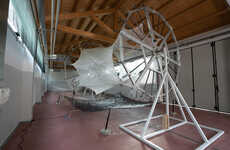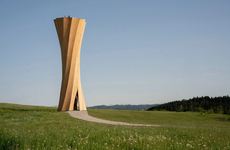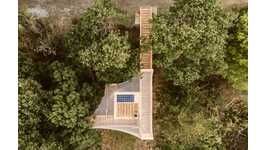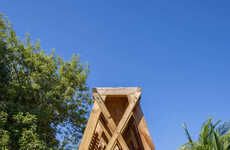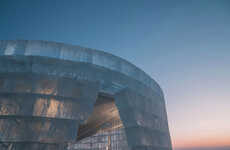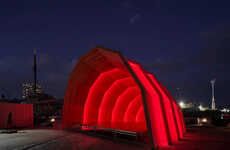
The ICD/ITKE Research Pavilion Was Made Using Robots
Mishal Omar — May 16, 2017 — Tech
References: vimeo & treehugger
The ICD/ITKE Research Pavilion 2016-17 was designed using emerging, state-of-the-art technology.
The pavilion was created in a collaboration between the Institute for Computational Design and Construction, and the Institute of Building Structures and Structural Design. The piece was woven by industrial robots and drones, and its design was inspired by "the silk hammocks spun by moth larvae." This inspiration is apparent in the asymmetrical structure, as it features a woven design made from "resin-impregnated glass and carbon fibre." The structure is 12 meters in length and was made with over 111 miles of material.
The ICD/ITKE Research Pavilion functions as an excellent example of the potential uses for industrial robots and drones in design and architecture.
The pavilion was created in a collaboration between the Institute for Computational Design and Construction, and the Institute of Building Structures and Structural Design. The piece was woven by industrial robots and drones, and its design was inspired by "the silk hammocks spun by moth larvae." This inspiration is apparent in the asymmetrical structure, as it features a woven design made from "resin-impregnated glass and carbon fibre." The structure is 12 meters in length and was made with over 111 miles of material.
The ICD/ITKE Research Pavilion functions as an excellent example of the potential uses for industrial robots and drones in design and architecture.
Trend Themes
1. Industrial Robotics - The use of industrial robots for design and construction presents disruptive innovation opportunities in the architecture industry.
2. Drone Technology - The integration of drones in architectural design processes opens up disruptive innovation opportunities for faster and more efficient construction projects.
3. Emerging Materials - The use of advanced materials, such as resin-impregnated glass and carbon fiber, in architectural design showcases disruptive innovation opportunities for creating unique and sustainable structures.
Industry Implications
1. Architecture - The architecture industry can benefit from the disruptive innovation opportunities presented by the use of industrial robots and drones in design and construction processes.
2. Construction - The construction industry has the potential to leverage drone technology for improved project efficiency and cost-effectiveness.
3. Materials Manufacturing - The materials manufacturing industry can explore the disruptive innovation potential in developing advanced materials for architectural design and construction applications.
1.1
Score
Popularity
Activity
Freshness


